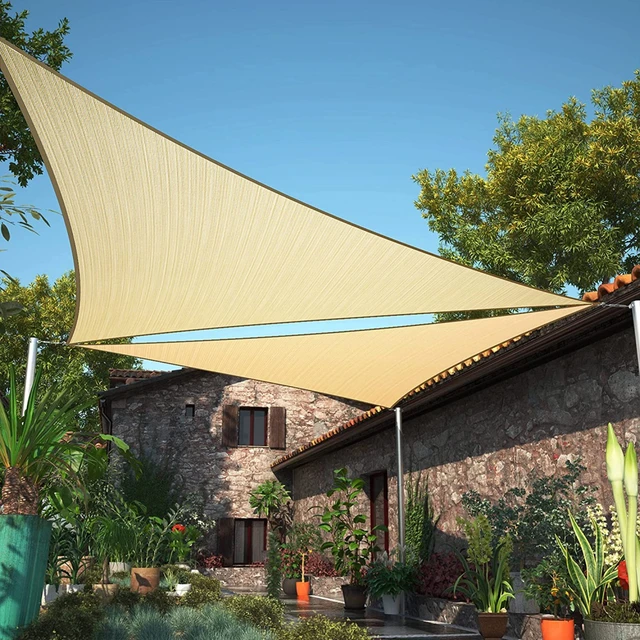
Sail awnings are a popular way to add shade, style, and beauty to outdoor spaces. They come in a variety of shapes, sizes, and designs, and they are perfect for creating an inviting and comfortable outdoor area. However, choosing the right material for your sail awning is crucial to ensure that it meets your specific needs. In this article, we will discuss how to choose the right material for your sail awning.
Fabric Type
The type of fabric used for your sail awning is an essential factor to consider. Sail awnings are made from different types of fabrics, including PVC, polyester, acrylic, and mesh. Each fabric type has its advantages and disadvantages, and choosing the right fabric type will depend on the specific needs of the user.
PVC fabric is durable, water-resistant, and easy to clean. It is commonly used for commercial sail awnings, and it is ideal for areas exposed to harsh weather conditions. However, PVC fabric is heavy and may not be suitable for residential sail awnings.
Polyester fabric is lightweight, durable, and easy to clean. It is commonly used for residential sail awnings, and it is ideal for areas exposed to moderate weather conditions. However, polyester fabric is not water-resistant, and it may not be suitable for areas exposed to heavy rain.
Acrylic fabric is durable, water-resistant, and fade-resistant. It is commonly used for residential and commercial sail awnings, and it is ideal for areas exposed to moderate weather conditions. However, acrylic fabric is expensive and may not be suitable for those on a budget.
Mesh fabric is lightweight, breathable, and anti-microbial. It is commonly used for sail awnings in areas exposed to wind, and it is ideal for creating a comfortable outdoor area. However, mesh fabric may not be suitable for areas exposed to heavy rain.
UV Protection
UV protection is an essential factor to consider when choosing the right material for your sail awning. The fabric used for your sail awning should be able to block harmful UV rays, protecting you and your outdoor furniture from the damaging effects of the sun.
Most sail awning fabrics have a UV protection rating, which indicates the degree to which they block UV rays. The UV protection rating is measured in UPF (Ultraviolet Protection Factor), and the higher the UPF rating, the better the fabric is at blocking UV rays.
When choosing the right material for your sail awning, look for a fabric with a high UPF rating. A fabric with a UPF rating of 50+ is ideal for providing maximum UV protection.
Color and Design
The color and design of your sail awning are also important factors to consider. The color and design should complement the surrounding area and create a harmonious balance between the sail awning and the outdoor space.
Sail awnings come in a variety of colors and designs, and it is essential to choose a color and design that matches your personal style and the style of your outdoor space. Neutral colors like beige, gray, and white are popular choices for sail awnings, as they blend well with different decor styles.
Durability
Durability is another important factor to consider when choosing the right material for your sail awning. The fabric used for your sail awning should be able to withstand the elements and last for many years. When choosing the right material for your sail awning, look for a fabric that is durable, water-resistant, and fade-resistant. A fabric that is treated with a UV-resistant coating will also help to extend the life of your sail awning.
Maintenance
Maintenance is another important factor to consider when choosing the right material for your sail awning. The fabric used for your sail awning should be easy to clean and maintain.
Most sail awning fabrics can be cleaned with a mild detergent and a soft brush. However, some fabrics require special cleaning instructions, and it is important to follow these instructions to avoid damaging the fabric.
When choosing the right material for your sail awning, look for a fabric that is easy to clean and maintain. A fabric that is resistant to mold and mildew will also help to reduce the amount of maintenance required.
Conclusion
Choosing the right material for your sail awning is crucial to ensure that it meets your specific needs. The fabric type, UV protection, color and design, durability, and maintenance are all important factors to consider when choosing the right material for your sail awning. By taking the time to choose the right material, you can create a beautiful, comfortable, and inviting outdoor space that you can enjoy for many years.

